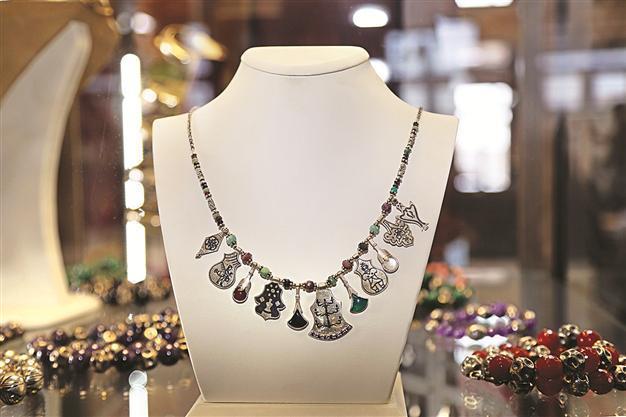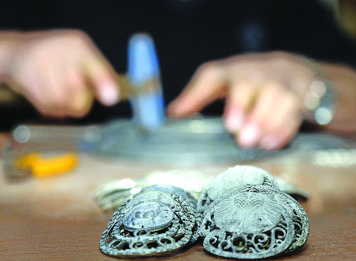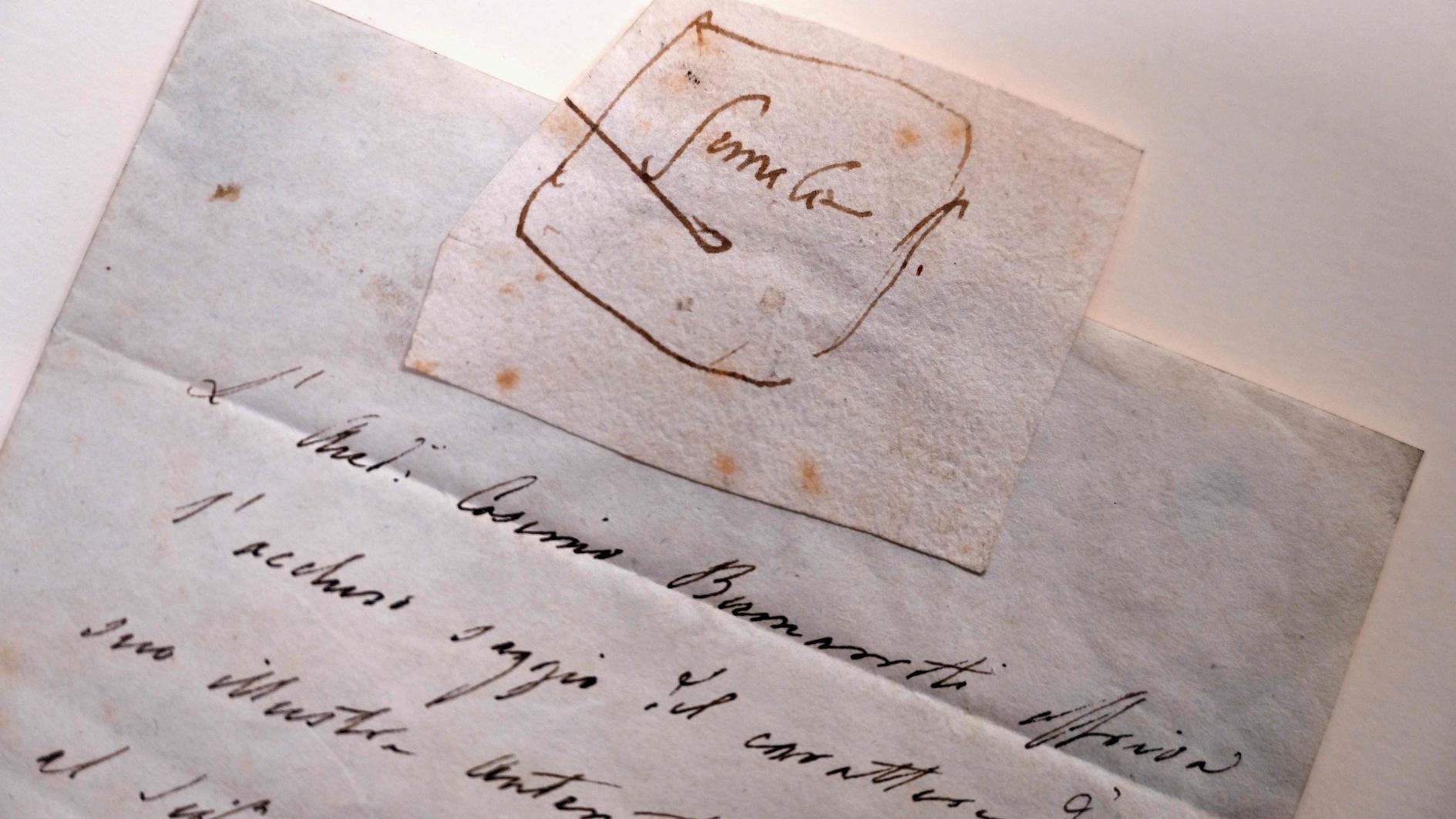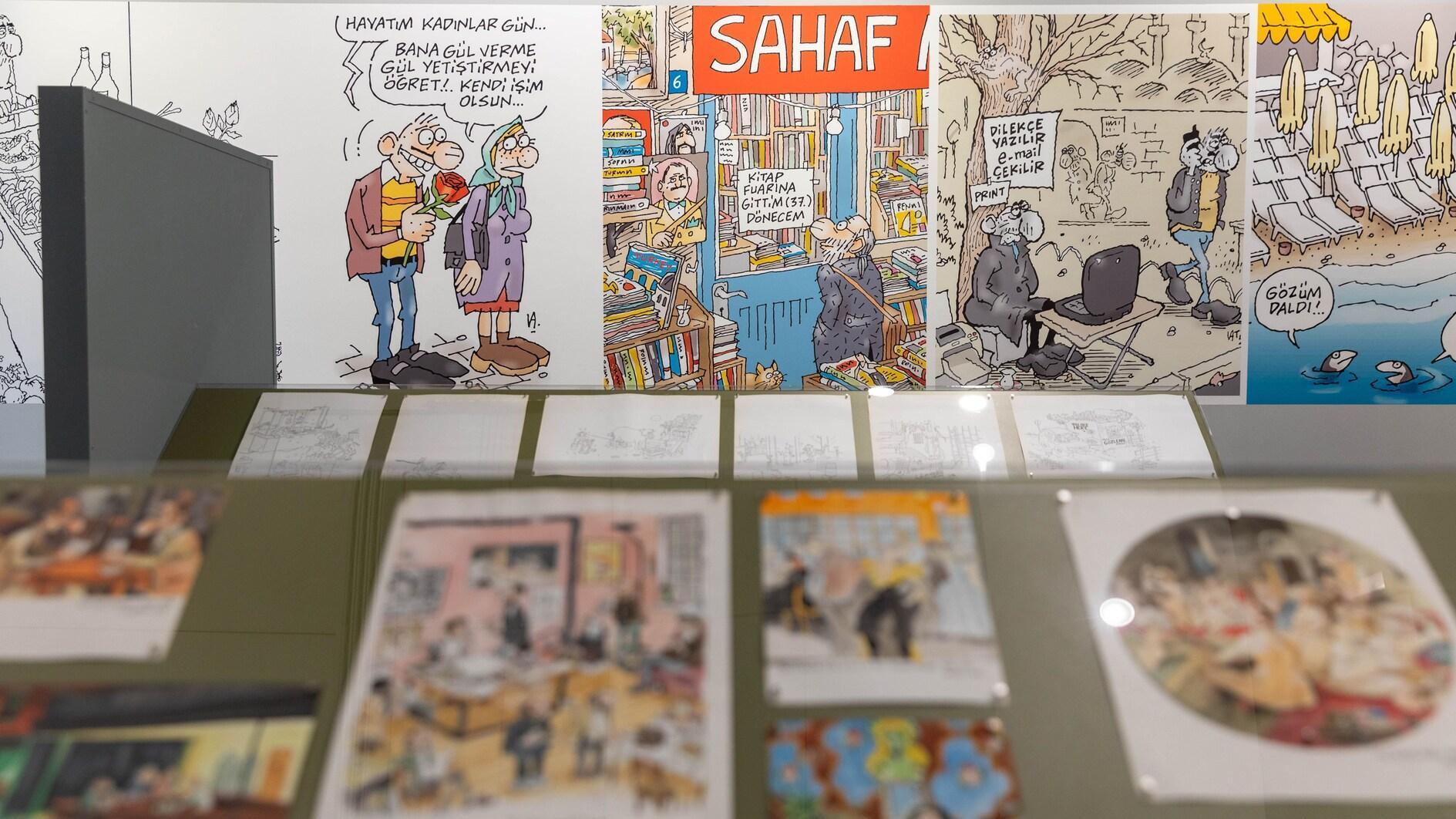Urartian jewelry techniques as new today as 3,000 years ago
VAN – Anadolu Agency
 Techniques used for ornamenting jewelry that were used by the Urartian Kingdom nearly 3,000 years ago are still in practice in the sector even though technology has dramatically changed.
Techniques used for ornamenting jewelry that were used by the Urartian Kingdom nearly 3,000 years ago are still in practice in the sector even though technology has dramatically changed. “Technology has developed but the techniques have not changed. In the ancient era, gold was put between leather and turned into a plaque with the method of forging,” Van Yüzüncü Yıl University (YYU) Archaeology Department Professor Rafet Çavuşoğlu said.
“Today this is made by machines. Today technology has changed but the ornamentation technique remains the same. I could hardly finish the drawing of an Urartian-era belt, which is on display at a museum today, in 1.5 months. This shows us the improvement of Urartian people in the jewelry sector,” he said.
In addition to its development in agriculture, livestock and architecture, the Urartian Kingdom, which ruled the eastern Anatolian region in the eighth century B.C., remains a source of inspiration for today’s jewelry sector with its methods used in processing metals.
 YYU’s Archaeology Department has so far unearthed countess artifacts during excavations. Çavuşoğlu, the head of the department, said ornamentation techniques such as coating, embossment, filigree and granulation were used 3,000 years ago on earrings, necklaces, collars, rings, brooches and belts.
YYU’s Archaeology Department has so far unearthed countess artifacts during excavations. Çavuşoğlu, the head of the department, said ornamentation techniques such as coating, embossment, filigree and granulation were used 3,000 years ago on earrings, necklaces, collars, rings, brooches and belts. The techniques remain popular today despite developing technology, adding that even the smallest ornamentations had been processed in the jewelry carefully using mountain crystals.
Çavuşoğlu said the jewelries, used by both families living in the palace or ordinary people, were very attractive.
“The Urartians used metals like gold, silver, copper, lead and iron in various forms of jewelry. In addition, 20 types of semi-precious stones were used in the jewelry. We divide the Urartian jewelry according to the body parts like the head, neck, leg, hand and foot jewelry. They had two basic techniques, namely casting and forging. The jewelry comes to life with these techniques, which are still used today,” Çavuşoğlu said.
The Urartian techniques are still used in “Mardin işi” and “Trabzon Hasırı” (jewelry types unique to Mardin and Trabzon provinces). “Gold or silver is processed after being turned into filament with this technique. It was quite popular in the Urartian era just like today,” he said.
Mountain crystals rather than magnifying glass
Çavuşoğlu said a rare bracelet from the Urartian era, on which all ornamentation techniques had been used, was on display at the Van Museum.
“The fine details in jewelry makes us think about the tools used by the Urartians. They were all handicraft works. When we examine even a very small earring, we see that it has many fine details.
The Urartian people used the mountain crystals as a magnifying glass while working on the fine details.
It is very hard for a normal person to process small geometrical designs on jewelry. We see these designs when we examine it with magnifying glasses. This is why mountain crystals had a very important place in the Urartian era,” he said.
















